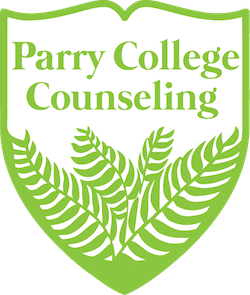

College: University of Redlands
Location: Redlands, CA (45 minutes west of Palm Springs, 1 hour 15 min east of Los Angeles)
Type of Institution: private university
Size: 2,500 undergraduates
Admissions Advice: Redlands is committed to learning about each student in their application process and is an accessible school for a range of different student profiles. They use the Common App, require recommendation letters, two short essays, and provide students the opportunity to interview if they so desire. Additionally, there are extra scholarship opportunities and/or admission requirements for students interested in art, creative writing, music, theatre, or the Johnston Center for Integrative Studies.
Most popular majors: Business, Music, Psychology, Biology, Communication Sciences and Disorders
Words to describe students I met: outgoing, laidback, well-rounded, balanced, friendly… honestly, it is really hard to pinpoint a Redlands “type” as there are so many different kinds of students who can all thrive on this campus!
Unique academic aspects: Redlands has a number of interesting interdisciplinary majors, such as Health, Medicine, and Society, a blend of health sciences, psychology, political science, and economics, and Human-Animal Studies, which combines ethics, ecology, animal behavior, and environmental science, among other subjects. This approach gives prospective med and vet school students a more holistic and comprehensive undergraduate education (though students do go on to many other career pathways).
Additionally, the Johnston Center is a unique cohort option that provides students with mentorship and support as they chart their own educational journeys. This includes designing their own “emphasis” instead of major, narrative evaluations instead of grades, special Johnston Center communities, grants, research opportunities, and more. This is a great match for the self-directed student who doesn’t just want to pick an existing major and check the boxes to graduate.
Unique social/cultural aspects: Redlands has a four year on-campus housing requirement, which is definitely a little unique but not unheard of among smaller colleges. My guides both raved about their on-campus housing experiences, both in terms of the quality and variety of housing options. One guide was a Greek life participant (local chapters primarily, not national affiliates) and lived in a shared house with three other friends, while the other guide was on their second year in a more traditional dorm. There are four dining halls on campus so students have variety there as well. Because of this requirement, the campus community is incredibly strong and there are tons of things to do outside of class.
For those who don’t want to spend all of their time on campus, Redlands is a gateway for some great adventures. Though Redlands isn’t located in the heart of a major city, it does provide students with a surprising amount of off-campus social opportunities, such as music festivals and events (Coachella, Stagecoach, Hard Summer, Desert Lands), outdoor recreation (Joshua Tree, Big Bear, mountain biking, climbing, and, if you are okay with a 1+ hour drive, surfing!), and bigger city life in Palm Springs, LA, or San Diego. It is a really great jumping off point for so many different kinds of quintessential Southern California experiences.
Colleges that seem similar: Muhlenberg College, University of Puget Sound, Occidental College
Concerns about this college: One of my tour guides commented that there is some lack of awareness of the experience of lower income students on campus. He mentioned that classmates often didn’t understand his need to work a job on the weekends to send money home to help his family, and that he felt embarrassed about not being able to book a spring break trip with classmates from wealthier backgrounds. (To be honest, I experienced this same tension when I attended the nearby Claremont Colleges.) So this isn’t something unique to Redlands, but it is another element of campus diversity/dialogue worth considering.
That said, 90%+ of Redlands students receive some form of financial aid, including merit scholarships that are among the biggest I’ve seen (especially for a California school). Any student with a 3.5+ weighted GPA can attend for no more than $22,000/year tuition (with room & board & other costs, this still comes in at under $40,000). For families without significant financial need, this is a great option.
Overall impressions: Redlands has become an increasingly popular option among my students over the past few years (I have four students currently attending!) and I can see why after my fantastic visit. The campus is full of musicians and creatives, business majors, free-thinking Johnston Center students, pre-med hopefuls, future politicians, jocks, Greek life participants, outdoorsy students and basically everything in between, and I love that most students participate in multiple different organizations on campus. The staff and administration are incredibly welcoming and supportive and I really felt that strong sense of community from the moment I stepped foot on campus. This is an absolute gem!
